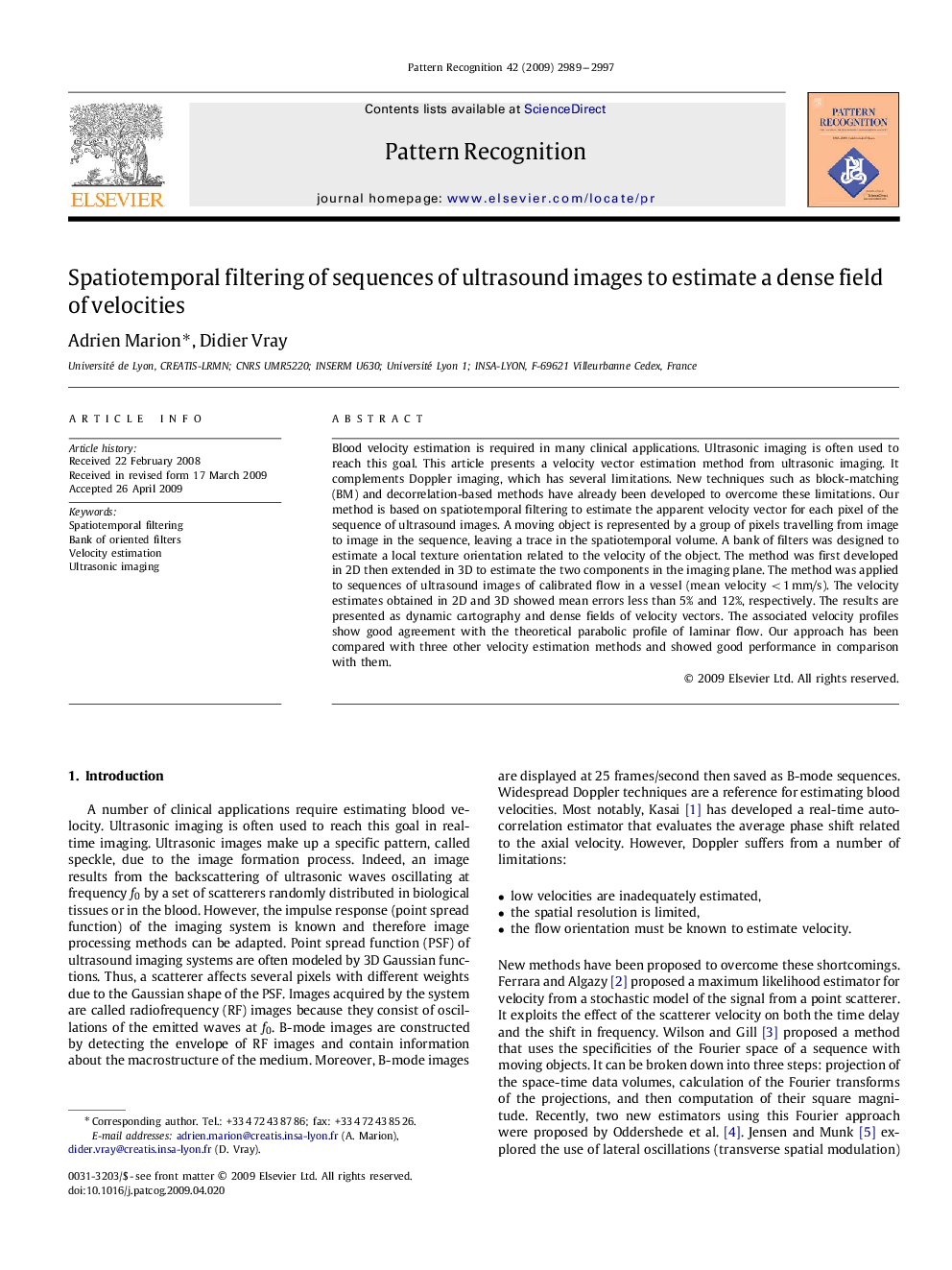| Article ID | Journal | Published Year | Pages | File Type |
|---|---|---|---|---|
| 532639 | Pattern Recognition | 2009 | 9 Pages |
Blood velocity estimation is required in many clinical applications. Ultrasonic imaging is often used to reach this goal. This article presents a velocity vector estimation method from ultrasonic imaging. It complements Doppler imaging, which has several limitations. New techniques such as block-matching (BM) and decorrelation-based methods have already been developed to overcome these limitations. Our method is based on spatiotemporal filtering to estimate the apparent velocity vector for each pixel of the sequence of ultrasound images. A moving object is represented by a group of pixels travelling from image to image in the sequence, leaving a trace in the spatiotemporal volume. A bank of filters was designed to estimate a local texture orientation related to the velocity of the object. The method was first developed in 2D then extended in 3D to estimate the two components in the imaging plane. The method was applied to sequences of ultrasound images of calibrated flow in a vessel (mean velocity <1mm/s). The velocity estimates obtained in 2D and 3D showed mean errors less than 5% and 12%, respectively. The results are presented as dynamic cartography and dense fields of velocity vectors. The associated velocity profiles show good agreement with the theoretical parabolic profile of laminar flow. Our approach has been compared with three other velocity estimation methods and showed good performance in comparison with them.
